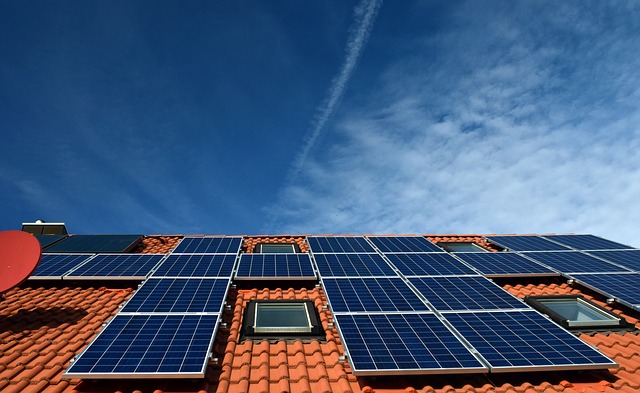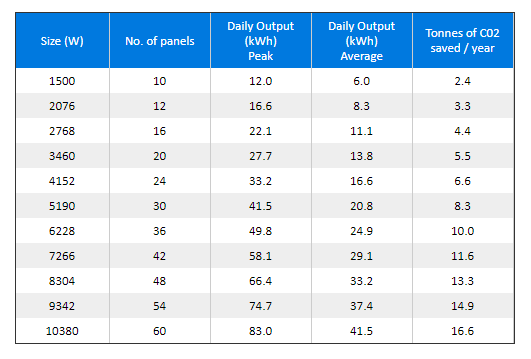Frequently Asked Questions
What’s in it for my business?
Quite simply, a significant reduction in your energy costs. Our Solar Power System will pay for itself within a few years. Your system will generate “free” electricity for many years to come.
Investment allowances, the sale of Renewable Energy Certificates and feed-in tariffs all contribute to reducing the out of pocket cost of going solar, and you’ll be showing your customers and employees that your business is doing its bit for the environment.

What are Renewable Energy Certificates (RECs)?
In response to climate change, and to encourage the development of renewable energy, wholesale buyers of electricity such as retailers are required to source a portion of their power from renewable sources. This is demonstrated by the purchase of Renewable Energy Certificates (RECs) which must be surrendered to the Office of the Renewable Energy Regulator.
One REC represents the generation of 1 MWh (megawatt-hour) of electricity. As the total electricity produced by your Clear Solar power system depends on the amount of sun that falls on your roof, the number of RECs created by your system depends on its size and a factor linked to your postcode. The sunnier your postcode, the more RECs you can create. On installation, you can create RECs equivalent to the anticipated amount of power that your system will generate over the next 15 years.
RECs can be sold through companies that are authorised to deal in them. Our base prices assume that you assign the RECs created by your system to us. We then sell them, and this reduces the out of pocket cost of your system.
Why would I want to keep my RECs?
If you do not create RECs for your system then wholesale buyers of electricity will need to buy RECs from elsewhere, so by keeping your RECs you may be encouraging further investment in renewable energy.
What’s a kW and a kWh?
kW stands for kilowatt, or 1,000 watts. It is a measure of power. Your Clear Solar power system is rated according to the number of watts it can produce in full sun. kWh stands for kilowatt hour. It is a measure of energy. If you ran a 1 kW electric heater for one hour, it would use 1 kWh of energy. Electricity companies bill you a certain amount per kWh you use.
Will a 1 kW system generate 1 kW of power?
The short answer is “no”.
Manufacturers of solar panels rate their output under standardised conditions, often referred to as Standard Operating Conditions (SOC) or Standard Temperature and Conditions (STC). This test is designed to be a convenient method of comparing the performance of panels under laboratory conditions. In the real world, solar panels perform differently and some panel manufacturers also provide figures for panel performance under Normal Operating Temperature and Conditions, sometimes referred to as NOTC.
The main influence on the output of a solar cell is its temperature. The standard test measures the output when the actual solar cell is at a temperature of 25oC and illuminated with 1,000 watts per square metre. The cells, being a dark colour, heat up in the sun. Typical operating temperatures are around 40oC, and at this temperature power output most cells produce around 20-30% less power than they generate at 25oC. Also, atmospheric conditions mean that the amount of energy falling on the cells will rarely be 1,000 watts per square metre. A 1 kW system installed at the top of a mountain with an air temperature of around zero might come close to matching Standard Temperature and Conditions.
Small losses of power also occur at the inverter (3-6%), and any dirt on the solar panels may also lead to a small additional loss. In the real world, a 1 kW system (as measured under Standard Temperature and Conditions) is likely to have a peak output of between 700 and 800 watts.
In line with world practice Clear Solar’s systems are rated according the panel specifications determined under standard conditions. However, the important figure is how much electricity your system actually produces. Our calculation of the daily output of each system is based on real performance under conditions experienced in southeastern Australia. Higher performance can be expected in sunnier parts of Australia.
How much electricity will my system produce and how much CO2 will it keep out of the atmosphere?
The following table provides a guide for systems located in Melbourne. Higher performance will be achieved in sunnier locations. (Update for larger systems)

What is the value of electricity my system will produce over its lifetime?
There are many factors that will influence this calculation: the cost of electricity, the level of feed-in tariffs, the size of your system, how much sun it receives and how much electricity you use during the day.
An Clear Solar 1 kW system installed in Melbourne can be expected to produce up to 1,460 kWh (kilowatt-hours) per year. At current prices of around 16 cents per kWh, that’s a saving of $234 a year or $5,840 over 25 years.
Electricity prices are expected to rise steeply in coming years and feed-in tariffs of up to 60 cents per kWh are about to be introduced. It is therefore quite realistic to expect the value of total electricity generated by a 1 kW system to exceed $20,000 over 25 years.
Can Clear Solar systems be fitted on angled roofs?
We can design solutions to suit different types of roof. Tilt systems are specifically designed for flat or nearly flat roofs. For sloping roofs, flat panel mono crystalline silicon panels may provide a better solution.
Do I need a new electricity meter?
Subject to an interconnection agreement with your electricity retailer, you will need a new bi-directional (import-export) meter or yor smart meter will be reprogrammed to reflect the power generated and fed back into the grid.
Are your systems resistant to storm damage?
Panels are designed to withstand exposure to the elements including rain, hail and wind. Your system would be designed to comply with regulations and component design criteria.
Are there any ongoing costs?
The only costs are the regular inspections required by some power authorities and the replacement of any components that fail outside of the warranty period. Solar panels have 25 year power warranty and 5 year limited product warranty. Inverters may have a shorter working life.
What happens if there is a power cut?
For safety reasons, grid-connected solar power systems must shut down within a fraction of a second of the grid losing power. This allows repairs to be made safely to the grid. Your system will automatically reconnect when power is restored to the grid.
Can I add further solar panels in the future?
You can add further panels to most systems up to the capacity of your inverter however you may be subject to any variations put in place with respect feed-in tarrifs.
Will my building insurance cover my solar panels?
In most cases yes, we do recommend that you advise your insurance company of your investment to ensure that your system is covered.
Does my grid connected solar power system need batteries?
No. Excess power you generate is sent to the power grid and used by other consumers. You will be credited for this power. When you are using more power than you generate, power is supplied by the grid. In effect, the electricity grid works a bit like your battery.
